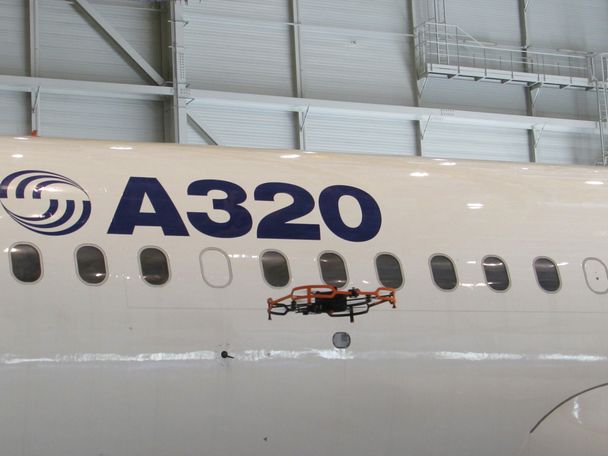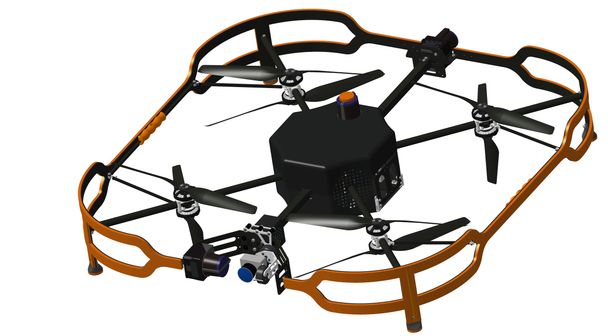Innovation takes aircraft visual inspections to new heights

The Airbus Advanced Inspection Drone reduces aircraft inspection times and enhances inspection quality
Airbus is demonstrating a new automated, drone-based aircraft inspection system that accelerates and facilitates visual inspections, considerably reducing aircraft downtime while simultaneously increasing the quality of inspection reports.
Unveiled today at the MRO Americas exposition in the U.S. state of Florida, the Advanced Inspection Drone is designed for use within a hangar. Once launched by an operator, it follows a predefined inspection path, capturing high-resolution images of the aircraft’s structure while keeping a safe distance through its built-in laser-based obstacle detection and anti-collision system.
High quality pictures are sent wirelessly to a rugged tablet for the operator’s review in real-time. They subsequently are transferred to a desktop inspection station, where a technician makes thorough reviews of the images using a dedicated software system that localises and measures any visual surface damage by comparing the real-world images against the aircraft’s 3D structural model. The advanced imaging tools allow for an accurate defect assessment, while the software generates a report to complete the full inspection cycle.
Available for airline and MRO (maintenance, repair and overhaul) uses
Initial demonstrations of the drone-based system have been made to several airlines that have expressed interest. It also will be offered to maintenance, repair and overhaul (MRO) organisations. Airbus’ innovative inspection tool will be available for industry use in the fourth quarter of 2018 following its approval by the European EASA airworthiness authority as an alternative means to complete the General Visual Inspection (GVI) process.
Upgrading to the new drone-based inspection system will enable operators and MRO providers to reduce inspection time, allow the aircraft to be released earlier while enhancing the overall quality of the reports, improving damage localisation, repeatability and traceability. The new inspection process will take only three hours, including 30 minutes of image capture by the drone, and will improve operator safety. By contrast, traditional aircraft visual inspection is performed from the ground or using a telescopic platform, in particular for the upper parts of the aircraft – a process which could typically last up to one day.
The Advanced Inspection Drone platform is an element of Airbus’ ‘Hangar of the Future’ initiative. This ambitious project combines the use of innovative technologies and smart ‘Internet of Things’-connected equipment such as drones, collaborative robots (or cobots) and non-destructive sensors with aircraft technical documentation and aircraft in-service data collected via Airbus’ open data platform, Skywise.
Development of the Advanced Inspection Drone was made in cooperation with Airbus subsidiary Testia, which specialises in non-destructive testing.
- Read the related press release.
